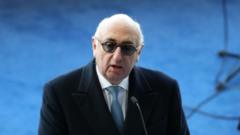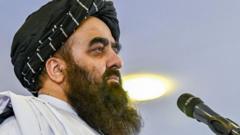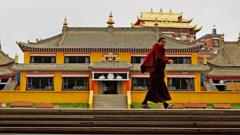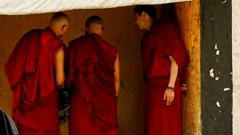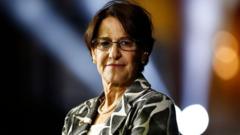Saydnaya prison, notorious for severe human rights abuses, stands as a grim symbol of the traumas endured by Syrian detainees. As families search for answers amidst chaos, volunteers step up to document atrocities, igniting a pursuit for accountability in a nation seeking healing.
Unveiling Saydnaya: The Terror of Assad's Torture Prison
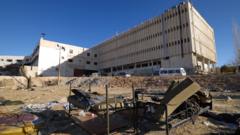
Unveiling Saydnaya: The Terror of Assad's Torture Prison
A haunting look into Saydnaya prison reveals the depths of despair faced by thousands under Assad's regime and the struggle for justice in the aftermath.
In the rugged hills outside Damascus lies Saydnaya prison, a site of unimaginable suffering that has come to epitomize the brutal legacy of Bashar al-Assad's regime. Recently painted in the colors of Syria's revolutionary flag, its entrance cannot disguise the chilling reality within. Since the Syrian conflict began in 2011, estimates suggest over 30,000 detainees were killed inside these walls, while countless others vanished without a trace into Assad's oppressive network of detention centers.
While other prisons may have granted families limited communication and visitation rights, Saydnaya was marked by an atmosphere of dread, where the fear of torture and death reigned supreme. The conditions within were inhumane; overcrowded cells forced detainees to cope with basic bodily functions using plastic bags, as access to latrines was severely restricted. Those liberated from Saydnaya have unveiled countless stories of brutality, and further revelations are imminent as former inmates begin to speak out.
Buried beneath the remnants of despair, the challenge confronting freed Syrians is formidable: documenting the extent of the regime’s crimes. Amid the chaos, a group of volunteers has emerged, driven by an urgent desire to gather evidence and restore some semblance of truth to the horrific legacy of Saydnaya. Safana Bakleh, a musician who leads volunteers, expressed hope in providing answers to families, understanding that documentation might be key to eventual legal reckoning.
Volunteers wrestled with profound shock at their discoveries within the prison's shadowed halls. Widad Halabi, a volunteer, broke down emotionally, declaring the conditions there "not fit for humans." This sentiment echoed across the walls of Saydnaya, a grim reminder of the neglect and brutality that persisted as many Syrians carried on with their everyday lives oblivious to the suffering within.
The path to justice remains murky. Bashar al-Assad and many of his regime's enforcers have fled, complicating accountability endeavors. As families scoured the desolate prison grounds, hoping for news, the hardened cries for justice began to rise. Many consider Saydnaya a mass grave, vehemently calling for retribution against those who perpetuated acts of cruelty.
Frustration boiled over for those still seeking lost loved ones. Ahmed, a man haunted by memories of his brother, expressed a yearning for justice, while others echoed that all involved—from the regime leaders to the lowest functionaries—should face retribution. As many fled the regime's impending collapse, others rushed to return home, intent on uncovering the fates of those left behind.
Unfolding not just as a quest for information but a plea for acknowledgement, families drew strength from shared loss, asserting that the narrative of Saydnaya should not be silenced. They yearned for recognition that could potentially lead to trials for the injustices witnessed.
In these turbulent times, the economic and political corruption that plagued Assad's regime has left Syria with daunting challenges. The people now face the dual burden of reconstruction and reconciliation—a task complicated by memories of unspeakable horror.
Yet, amidst the pain lies a flicker of resolve. Hassan Abu Shwarb's return from unjust imprisonment fostered a desire for a future founded on justice and healing. According to him, the people of Syria cannot move forward until the past is faced. “They should be punished,” he affirmed, symbolizing the collective longing for accountability.
As new leadership emerges within Syria, calls for justice may shape future governance. The cry for recognition and reparation resonates deeply among returning citizens, voicing a united front against the atrocities that marked their ordeal. Here, in the heart of a wounded nation, the tumult of past injustices collides with a cautious hope for reconstruction, weaving a complex tapestry of trauma and resilience in post-Assad Syria.




